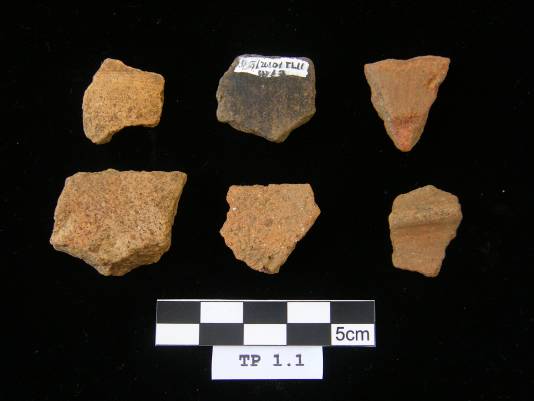Based on the results of a survey conducted together with Prof. Dr. John Miksic and Dr. Goh Geok Yian on 3 June 2010, another site was chosen, where the height of the ground surface indicated that it had not been disturbed by human activity. The location consisted of higher ground which had not been excavated previously for fill because it was used as a footpath near a football field. Remains of ruined structures or collections of temple stones which had not yet been excavated could be seen protruding from the surface. The land surface of the undisturbed land lay about 15 cm below the elevation of the modern road.
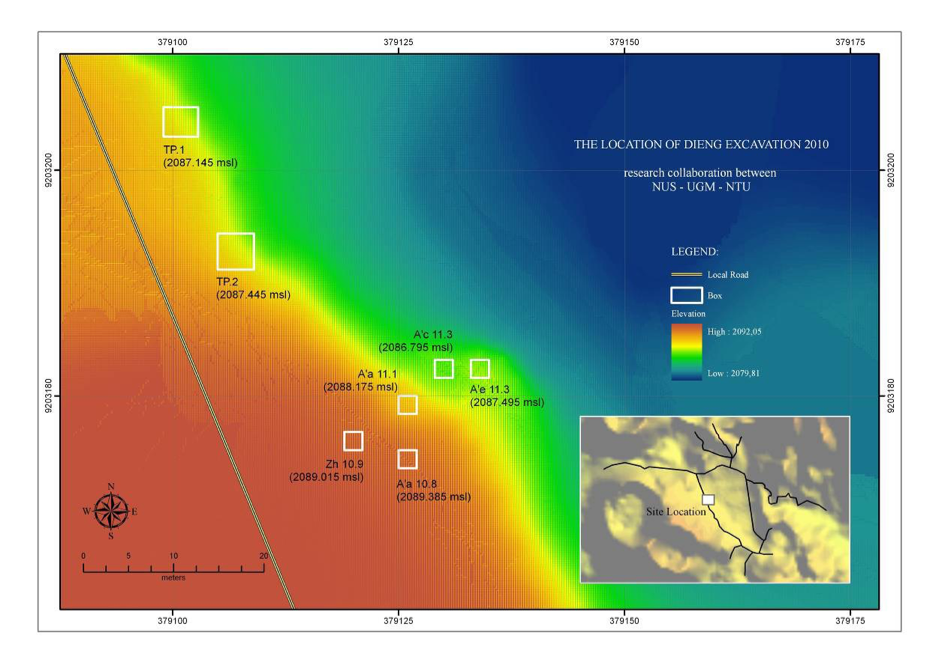
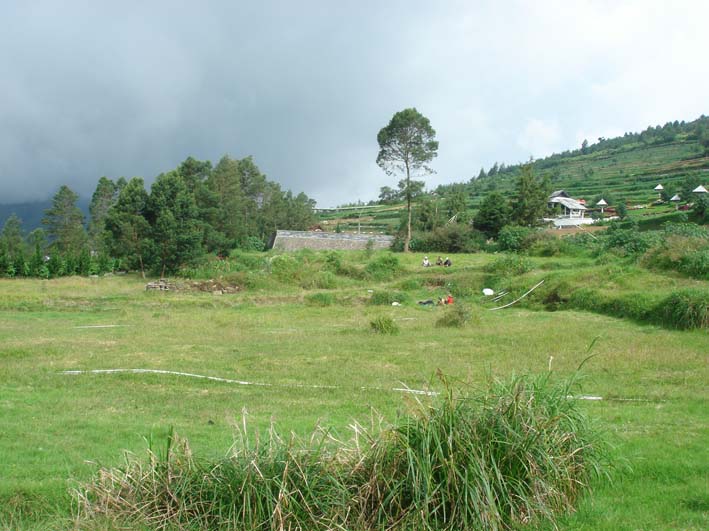
Two groups of test pits were laid out near the football field, TP1 and TP2.
Group TP1 consisted of units TP1, TP1.1 (EXT), TP 1.2 (EXT), TP1.3 (EXT), TP1.4 (EXT), and TP1.5 (EXT). Group TP2 consisted of TP2, TP2.1, and TP2.2.
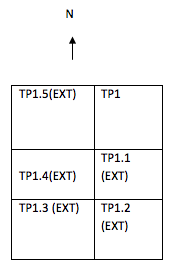
Soil Profiles
Unit TP1
Unit TP1 was located on the edge of an area which had apparently not been recently disturbed by human activity, near the area where Prof. Miksic remembered having seen a profile including ninth-century imported ceramics created by removal of earth used to build the footpath from the museum area to the Candi Arjuna complex in 1983. Unit TP1 measured 1x1m. It was excavated by spits to a depth of 1 meter below SDP. In this square Changsha ceramics were found for the first time, in addition to dense finds of unglazed earthenware. In spit 3, black loam, finds were relative dense including a Changsha sherd and 7 earthenware sherds. In spit 4 one earthenware fragment was found.
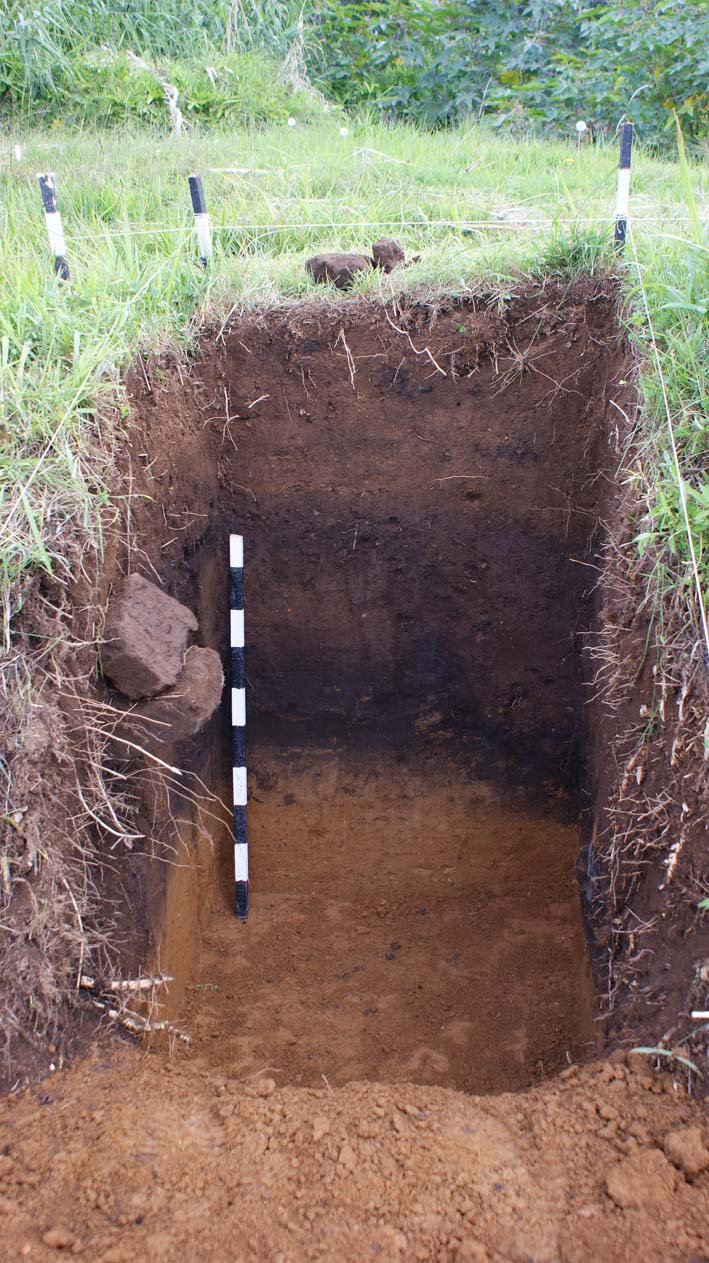
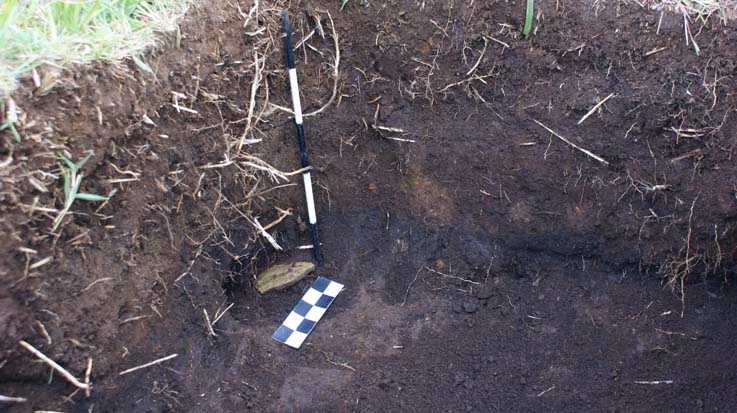
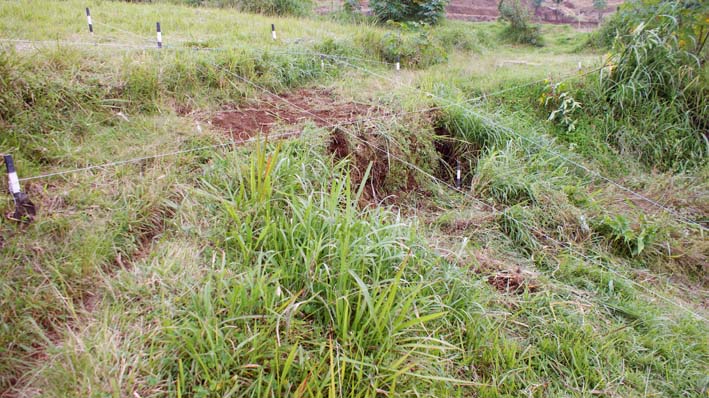
Dataset: Porcelain and Stoneware from TP1
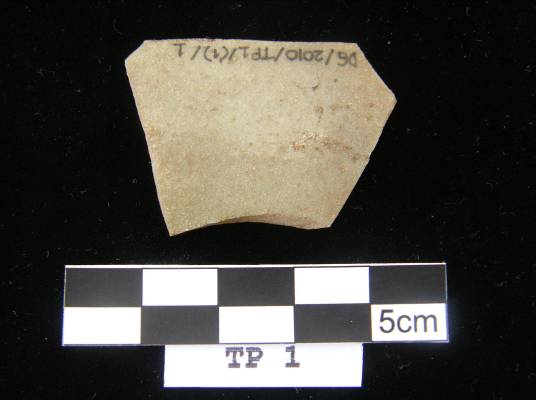
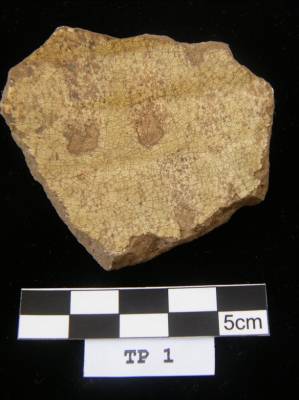
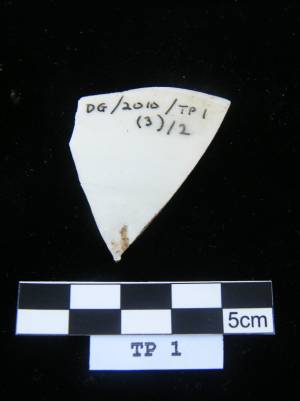
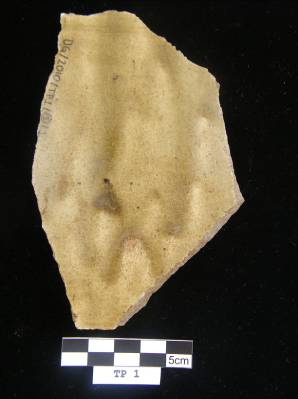
Dataset: Earthenware: TP1
Showing 0 of 0 total records in this dataset. See all.
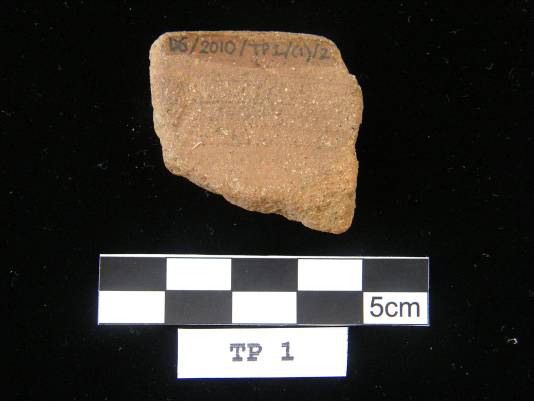
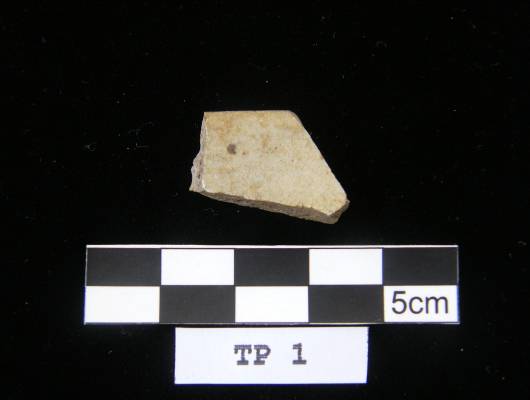
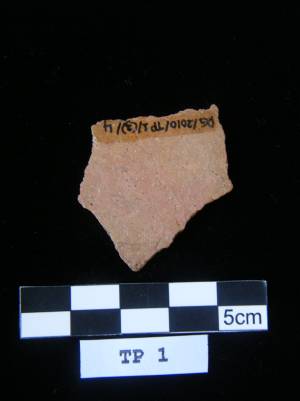
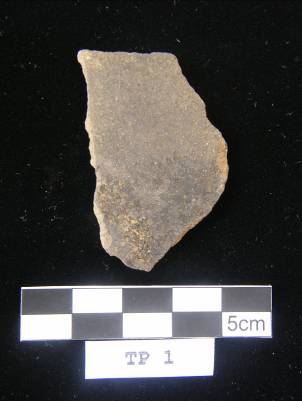
Since the location of this test pit demonstrated potential to yield more ancient foreign ceramics, the test pit was extended by excavating unit TP 1.1.
Unit TP 1.1(EXT)
Unit TP1.1 constituted an extension of TP1 in a southerly directly (see site plan). This unit measured 1x1m. Ground cover consisted of grass. The soil was friable. This unit was also excavated to a depth of 1m from SDP in corner T1 of unit TP1.
Table of Finds in Unit TP 1.1(EXT)
Dataset: Chinese Wares
Showing 0 of 0 total records in this dataset. See all.
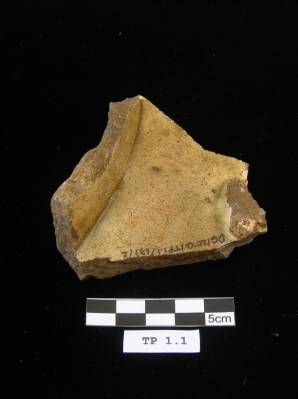
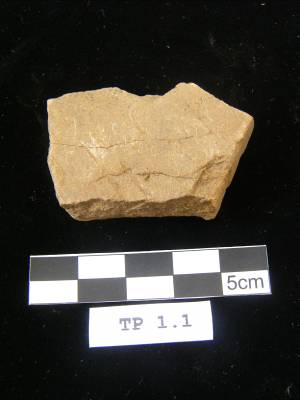
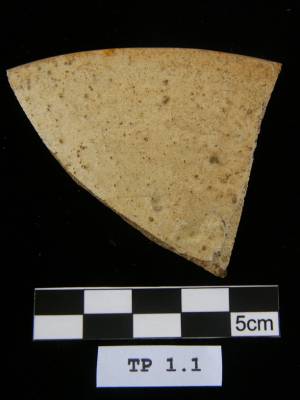
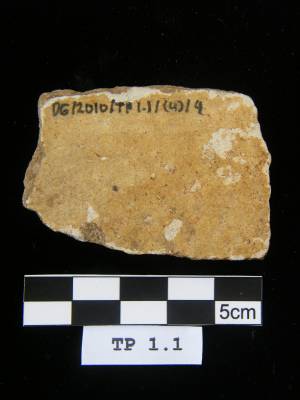
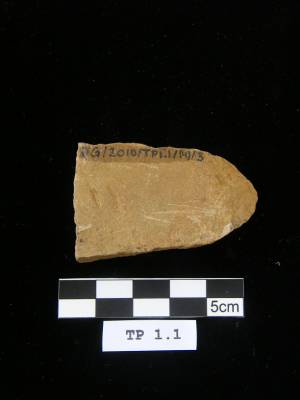
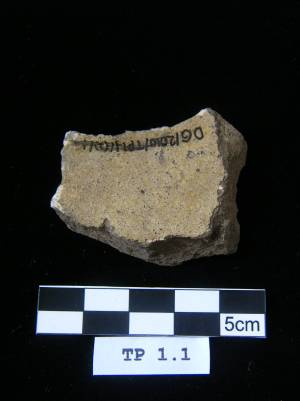

Dataset: Earthenware: Unit TP1.1
Showing 0 of 0 total records in this dataset. See all.
Soil in spit 1 was mixed with grass roots. In spit 2 (at a depth of 50 cm below SDP) 7 earthenware and 1 stoneware sherd were found. Soil in this layer was brownish black. In spit 3 (75 cm below SDP) finds were denser: 15 earthenware and 3 foreign sherds. In spit 4 (100 cm below SDP) 11 earthenware, 2 stoneware, and 2 foreign sherds (the latter possibly porcelain) and a cluster of bamboo charcoal were found.
Unit TP1.2 (Ext)
Unit TP1.2 (ext) represents a southward extension of unit TP1 (see sketch map). As in the two previous units, there were no sherds on the grass-covered surface. In spit 1 (25 cm below SDP) were 9 earthenware and 1 foreign sherds in brownish black soil, consisting of humus. In spit 2 (50 cm below SDP) were 2 earthenware sherds. Spit 3 (75 cm below SDP) yielded 31 earthenware, 10 foreign high-fired sherds, and one sherd of glazed earthenware. Soil in spit 3 was humus, black and friable. Spit 4 (100 cm below SDP) yielded 9 earthenware and 1 foreign sherds. A small quantity of charcoal was found in spit 4.
FINDS IN UNIT TP 1.2 (EXT)
Dataset: Chinese Wares
Showing 0 of 0 total records in this dataset. See all.
Dataset: EARTHENWARE Unit TP1.2
Showing 0 of 0 total records in this dataset. See all.
SQUARE TP 1.3 (EXT)
Unit TP1.3 (ext) was a westerly extension of unit TP1.2 (ext) (see sketch map). Spit 1 (25 cm below SDP) was sterile. In spit 2 (50 cm below SDP) 5 earthenware sherds and a small quantity of charcoal appeared. In spit 3 (75 cm below SDP) 16 earthenware and 9 foreign sherds appeared. An interesting find in spit 3 was a fragment of glass. In spit 4 2 earthenware sherds were found.
Table of finds TP1.3 (EXT) (spit 3)
Dataset: Porcelain and Stoneware
Showing 0 of 0 total records in this dataset. See all.
Dataset: EARTHENWARE
Showing 0 of 0 total records in this dataset. See all.
UNIT TP 1.4 (EXT)
Because the units of TP1 continued to show potential for yielding 9th-century remains, including ancient foreign ceramics, the excavation was extended further northward. The surface before excavation was covered with grass. No surface remains were found. Spit 1 (25 cm from SDP) yielded 3 earthenware and 1 glazed earthenware sherd. The soil of spit 1 consisted of humus. In spit 2 (50 cm below SDP) were found 6 earthenware and one foreign sherd, and a small amount of charcoal. Soil in spit 2 was somewhat loose. Spit 3 (75 cm below SDP) yielded 10 earthenware and 5 stoneware sherds. Soil was brownish black and loamy. Spit 4 (100 cm below SDP) was sterile. Soil was black loam.
TABLE OF FINDS TP 1.4 (EXT)
Dataset: Chinese Wares
Showing 0 of 0 total records in this dataset. See all.
Dataset: EARTHENWARE
Showing 0 of 0 total records in this dataset. See all.
TP 1.5 (EXT)
This extension unit was laid out west of Unit TP1. Like the other extension units in this sector, this unit was selected because of its potential to yield ancient ceramics contemporary with the construction of the temples on the plateau. The unit was excavated to a depth of 100 cm from the secondary datum point (spit 4). Below is the vertical distribution of finds.
Finds in Unit TP 1.5 (EXT)
Dataset: Chinese Ceramics
Showing 0 of 0 total records in this dataset. See all.
Dataset: Earthenware
Showing 0 of 0 total records in this dataset. See all.
